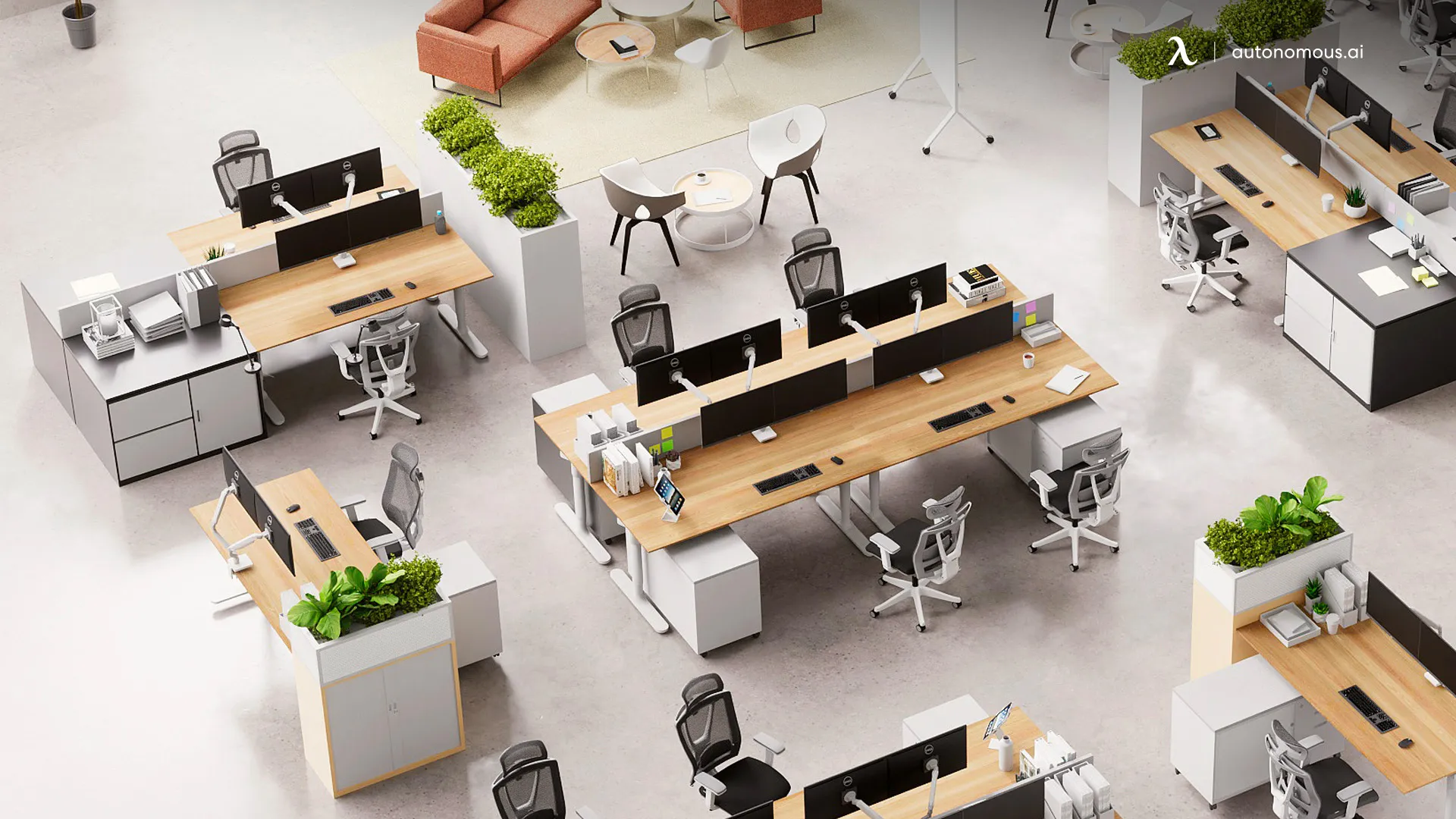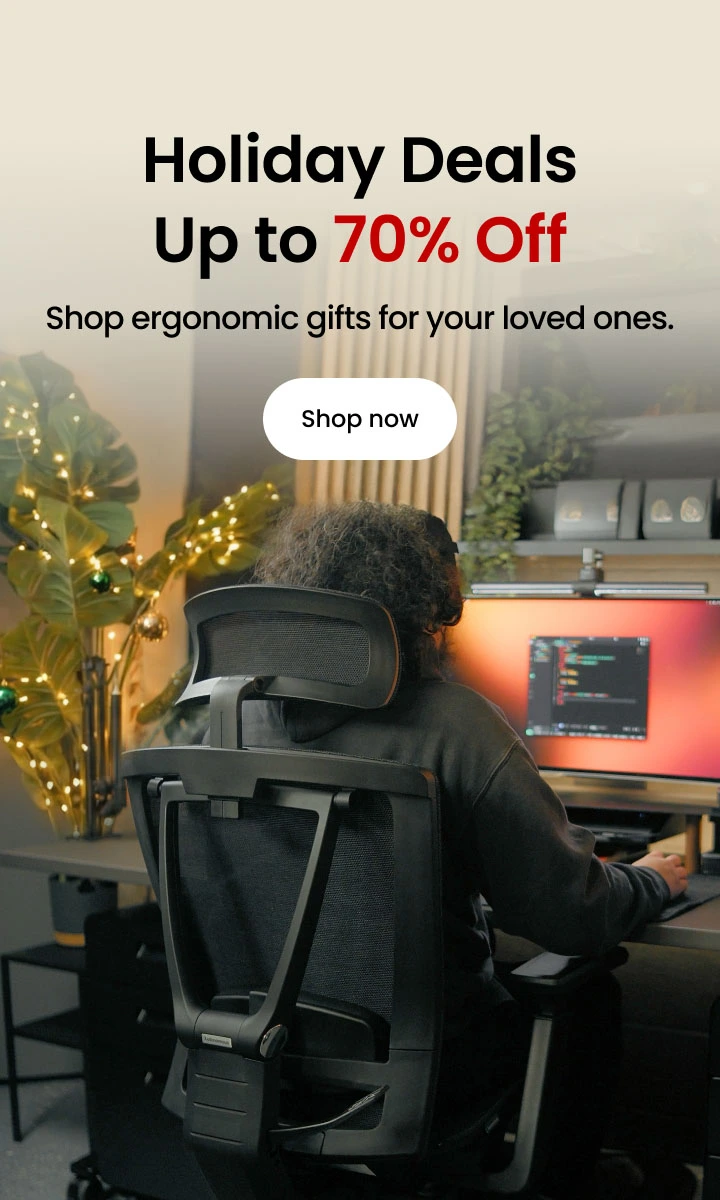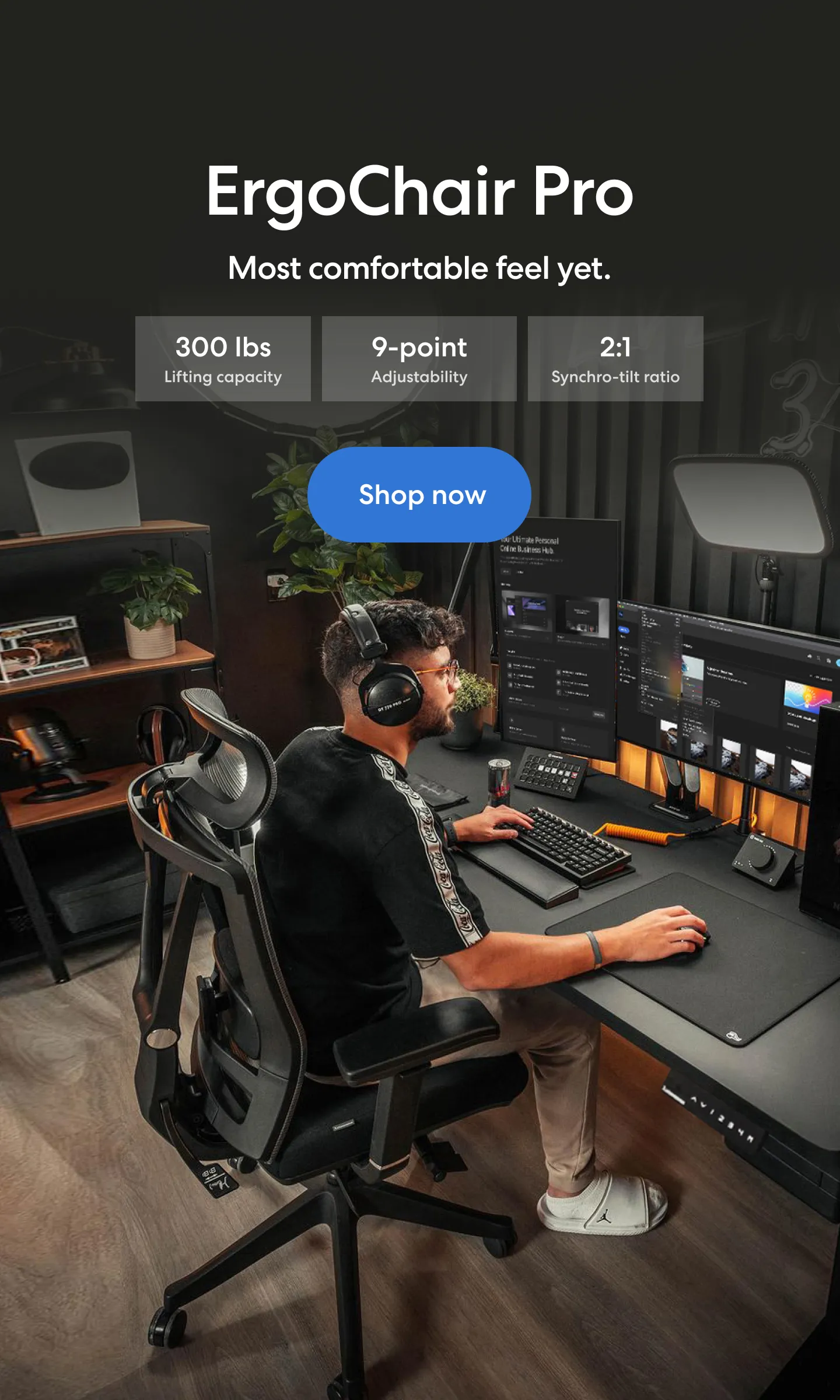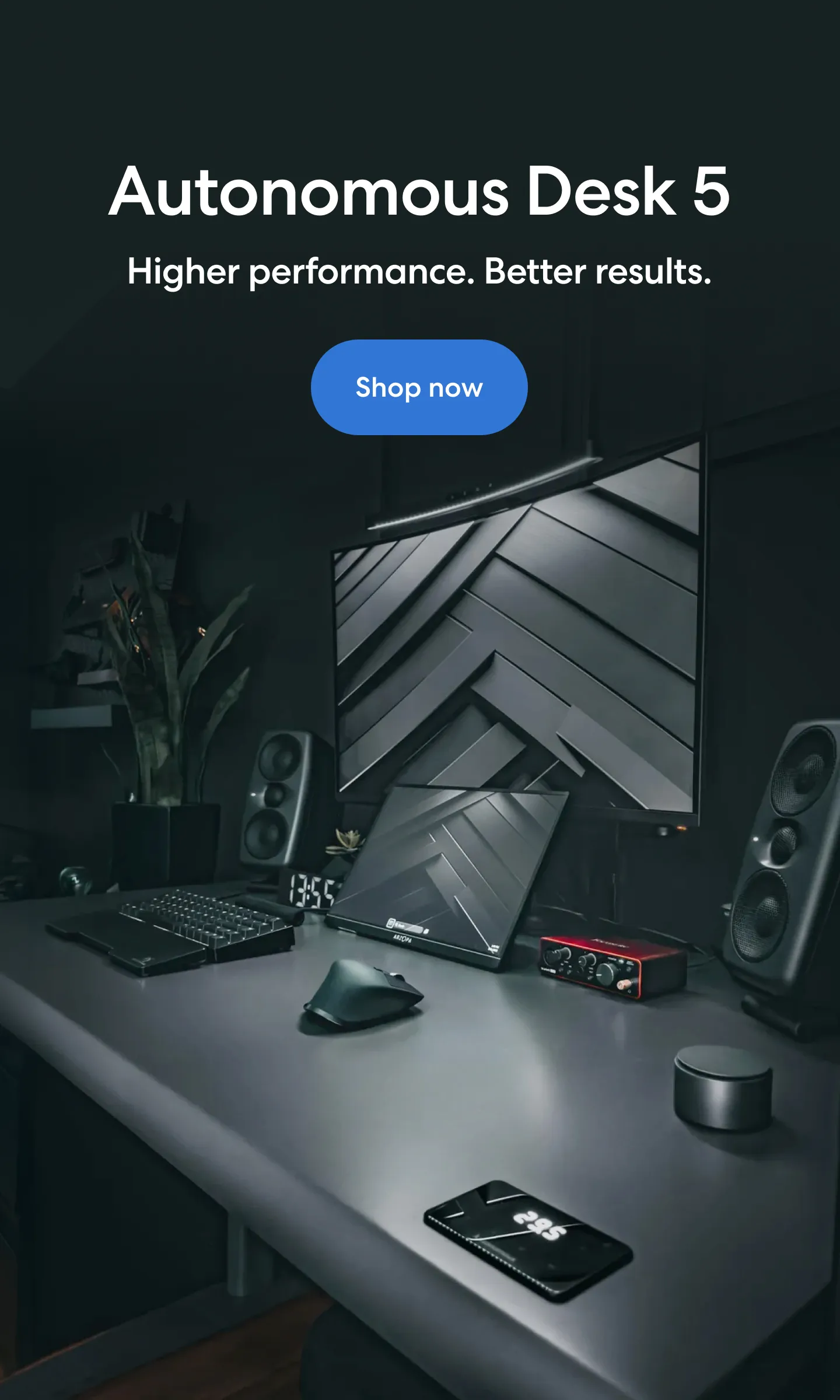
Difference Between Office Chair Glides and Casters
Table of Contents
The right choice regarding ergonomics, style, and durability can only be made by understanding the variations and characteristics of office chairs. If you want casters or glides on your computer chair, this is one way to choose between them. There are advantages and disadvantages to office chair glides and casters: both affect the chair's base design and motion.
Knowing which features suit your office needs is essential when choosing office furniture. You'll also gain more flexibility in seating options for your office by understanding the differences between glides vs. casters, the details regarding care and maintenance, such as whether you should use castors or glides for your new seating. You can read this article to learn how glides and casters compare and how to choose the best one for your posture office chair.
What is a Glide?
Sometimes, the legs of office chairs have small discs known as glides. The office chair glides are discs that help your chair glide over surfaces as they come in various shapes, sizes, and materials. If you're worried about damaging the floor with your chair, these are the perfect solution. Rather than wheels, an office chair on glides requires more force to move. This is the reason why casters are a better fit on furniture that is unlikely to be moved around frequently. Unlike wheels or fixed bases, they are more effective at protecting surfaces. A set of easy-to-install office chair glides can easily replace worn-out ones.
Types of Glides
The office chair carpet glides fitting comes in three types, each with different materials. We will cover the options you have available and help you determine which glide is right for you. A glide fitting comes in three types, each with different materials. In addition, we will cover the office chair casters options you have available and help you determine which glide is right for you.
When it comes to types, how they are fitted makes the biggest difference. There are three types of office chair glides you can choose from: self-adhesive, screw-on, and nail-on. When you only want to use the glides to move the furniture, self-adhesive glides are easily removable. In order to ensure a solid connection to the chair leg, nail-on glides need to be permanently attached. There is no difference in how the screw-on and screw-off variants work; their functions are equal.
Metal
Whether you slide the chairs over carpets or hardwood floors, metal office chair glides fitted on your ergonomic office chair provide the best gliding qualities. Metals such as stainless steel are the best option because they won't rust on the surface as easily as other alternatives.
Felt
Thanks to their flexibility, felt glides are easier to move over uneven floors, adjusting office chair height, and dampening sound. As a downside, however, they require regular maintenance and tend to wear out more quickly.
Plastic
Choose from anti-slip or resistance-free glides if you want different gliding properties. Plastic casters can cause streaks when rolled around on floors with a PVC or polypropylene top coat.
What is a Caster?
The wheeled devices attached to a chair's legs that allow it to move and roll easily are casters. The mount, stem, and wheel are the basic components of any caster. A caster's intended use and type may dictate the number of additional parts required.
Thanks to its casters, getting a chair from one place to another doesn't have to be difficult. In most cases, it is most suitable for the best ergonomic chair that is small, lightweight, such as a conference or task chair.
Types of Casters
Office chair casters come in a variety of types, each with its advantages and disadvantages. Office chairs typically come in the following types:
Charge-braked casters
Unless the user's weight is applied, free-wheeling casters keep rolling, allowing the user to move around while seated. Their swivel mechanism allows them to move in almost any direction without exerting any force. For office chairs, this is perfect for tasks such as communicating with colleagues or reaching items across tables from the user.
Free-wheeling casters
When weight is applied to a charge-braked caster, the chair locks into place instead of free-wheeling. When used, this option can be great for people who want mobility while their chair remains fixed.
Interval-braked casters
Interval-braked casters prevent chairs from rolling away by providing a slight brake, requiring a little more force to move, but preventing them from rolling away.
Hooded casters
A fender on some casters helps to conceal dirt and debris that collects as the casters roll. The caster's function is not improved by this addition, even though it is handy. It does help if you don’t know how to get hair out of office chair wheels.
Top 5 Office Chair Glides
If you’re rearranging furniture to create a better flow within your office or just moving some things around, make sure you don't get scratches all over your floor.
Furniture legs can scratch beautiful hardwood and tile floors or rip delicate carpets; sliders allow furniture to move across hard floors and carpets without any damage.
Therefore, we've reviewed the top 5 chair slides in 2023 to help you select the best furniture slide for your office floor protection.
1. Uvce Bell Glides
Uvce Bell is a very useful product for your workplace furniture, especially chairs. Any regular office chair can be transformed into a stationary one with the help of this handy equipment.
Attaching this office chair glide to the base of any office chair caster is a breeze, thanks to their grip ring stems.
We measured the stem's diameter at 7/16" and its length at 7/8", which are the typical dimensions for most brands and models of office chair glides.
After replacing chair glides with bell glides, you will get a softer rubber bottom, which is ideal for floors with a delicate texture. Additionally, the Uvce chair glides can support up to 550 pounds.
For individuals who have trouble getting in or out of swivel chairs, these office chair glides allow you to turn caster-equipped chairs into stationary ones without sacrificing height or any other ergonomic functionality.
2. DOZYANT Bell Glides
Dozyant Bell Glides are the perfect office chair companion if you need a cushioned, rubberized chair sole.
It offers additional safety for more delicate floor surfaces and helps you with better stability. These office chair glides are a breeze to set up and require no special equipment.
The DOZYANT chair glides prevent the chair from rolling away when you get up from a table or desk, making it a safer option than caster wheels for individuals who have trouble getting in and out of seats.
Unlike other office chair glides for carpet, these glides moved smoothly and caused no harm to our carpet. As a set of five, the heavy-duty glides can support up to 550 lbs, with each glide rated at 110 lbs.
It is Ideal for furniture that is in constant motion, including those found on boats, recreational vehicles, and uneven flooring.
3. DOZYANT Bell Glides Replacement
DOZYANT Bell Glides Replacement Office Chair has a smooth grip that fits on wood or ceramic tiles; there is no match for the sturdy grip and excellent traction of these office chair glides.
What's more?
We found the chair's height to be perfect, so the air pressure rod didn't scrape our floor. With these put-in office chair glides, the total height is 6.5 cm, which is a little taller than the Dozyant Bell Glides.
Their soft pads cover a rigid plastic base, and they're completely silent for serious office work. Lastly, compared to others, the Dozyant chair glides have a higher weight capacity.
4. Outus Bell Glides
The Outus Bell Glides provide you with a stable and comfortable sitting as opposed to caster chairs.
It comes in two timeless hues that complement a variety of chairs and are crafted from stiff and durable PU material, making them an affordable option for office chair glides for wooden floors.
Chairs with felt pads not only preserve your floor better, but also give users a more secure sitting, preventing injuries caused by rolling chairs.
With a minimal gliding height of 2 inches, the Outus bell glides are perfect for our little chair casters. You can turn your office chair into a stationary chair with these glides, all without sacrificing height.
Lastly, customers are pleased by how simple the casters are to set up. According to them, it is strong, operates well, and clips into the existing hardware. The product's high quality is another reason why we think it's a wise investment.
5. Enjoy Caster Bell Glides
Enjoy Caster replacement bell glides live longer than usual office chair glides. It will last for years due to its sturdy construction and resilience whether you're using it at home or in the office.
There are three types of Enjoy Caster bell glides: Nylon, felt pads, and PU.
The nylon Enjoy Castors bell glides work wonderfully with carpets, felt pads work well with wooden floor tiles, and PU can be used on any kind of floor.
They are simple to set up and come with 50 mm casters with both little and big glides. These nylon office chair glides are compatible with the majority of ordinary office chairs, with the exception of Ikea chairs, and they won't harm or wear out the carpets.
We love the Enjoy Casters' solid construction of steel and premium nylon that withstands wear and tear, doesn't corrode or rust, and lasts a very long time.
How to Replace Chair Glides
First Step: Take the Caster or Glide Off
The initial step is to invert the chair so that its wheels are pointing upwards and its head down on the floor. The casters/glides at the base of the office chair will be easier to reach in this way.
Next, turn a threaded caster clockwise to remove it; once they are pulled out to their full length, casters or glides with a threaded stem, essentially a screw, will disengage. If your caster begins to move in the direction of your twist, simply continue twisting, and it should eventually emerge, allowing you to determine its type.
If your caster won't unscrew, lubricate the stem caster and then take it out. It will help grease the grip stems for easier removal, but if you're still unable to remove the caster, try using a screwdriver and pry bar.
Second Step: Measure
It would help if you made a note of the caster and glides' stem type and size; measure the length of the stem using a ruler. The metal piece that attaches the caster to the chair is called the stem; be sure to note if the stem is gripped or threaded.
Third step: Change the Office Chair glides or Caster
Use your hands to screw a threaded caster into place until it stops turning. Align the threaded stem with the chair's leg and screw in the casters until they stop turning if they are threaded.
To install a grip caster/glide (one without a threaded stem), insert the stem into the chair leg and press it all the way down until the caster's top meets the chair leg's bottom.
When to Choose Glides & When to Choose Casters?
Office chair glides make a good choice when you need to purchase heavier office equipment that doesn't need to be very mobile. They move around smoothly without damaging the floor surface due to their sleek design.
Additionally, they are more subdued than casters, making them ideal for chairs without casters. Gliders are a smart choice if you don't intend to move your modern office furniture frequently and are concerned about the damages caused to the floor.
Caster wheels are better suited for furniture that’s moved frequently. Caster wheels make it easier to move furniture between meeting rooms or allow the user to maneuver freely around their desk, as they require less force to move and offer a greater range of motion than office chair glides.
Conclusion
Chairs with bell glides improve ergonomics in the workplace by making them more stable and mobile without damaging floors.
Bell glides can help create a more pleasant and productive workplace, so our top five chair glides above are the best option for an amazing work experience.
.svg)















